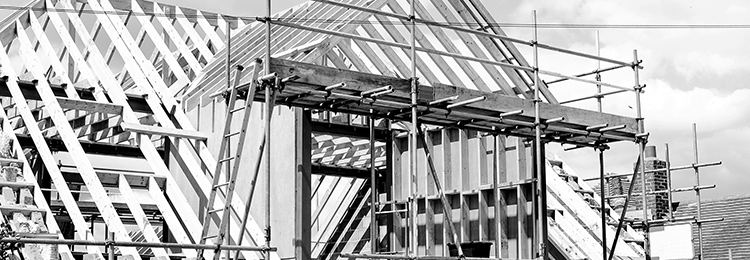Guardrails play a critical role in protecting workers and visitors on your job-site, but they work only when installed properly. In this article, we will cover how to Put Your Guard Up correctly.
OSHA Requirements for Fall Protection
Before work begins, OSHA requires that employers provide fall protection where workers are exposed to vertical drops of six feet or more. Guardrails are one of three main ways to provide that fall protection. You can also deploy safety nets or provide personal fall arrest systems for each employee.
Many times, the nature and location of the work will dictate the form that fall protection takes. Consider inspecting these common fall locations before beginning work:
- Window openings
- Stairways and landings
- Second-story entrances
- Exterior porches, decks, front steps
- Scaffolding
- Around the floor deck in the house (reassess these areas as you build each floor)
- Elevator shaft
Your Guardrail Compliance Checklist
If you choose to use a guardrail system, you must comply with the 10 OSHA provisions listed below. Be sure you have checked all 10 before work begins on your job-site.
- Top edge height of top rails must be between 42 +/- 3 inches above the walking/working level, except when conditions warrant otherwise and all other criteria are met. For example, when employees are using stilts, the top edge height of the top rail must be increased by an amount equal the height of the stilts.
- Mid rails must be installed between the top edge and the walking/working surface when there is no wall or other structure at least 21 +/- 3 inches high.
- Mid rails must be midway between the top edge of the guardrail system and the walking/working level.
- Toe boards must be installed to prevent materials and/or tools from falling to lower levels.
- Screens and mesh must extend from the top rail to the walking/working level and along the entire opening between rail supports if material is stacked above the toe board height.
- You may leave a maximum of 19 inches between your guardrail and a structure to allow for work to be done.
- Guardrail systems must be capable of withstanding at least 200 pounds of force applied within 2 inches of the top edge, in any direction and at any point along the edge, and without causing the top edge of the guardrail to deflect downward to a height less than 39 inches above the walking/working level.
- Mid rails, screens, mesh, and other intermediate members must be capable of withstanding at least 150 pounds of force applied in any direction at any point along the mid rail or other member without deflecting below 18 inches.
- Guardrail systems must not have rough or jagged surfaces that would cause punctures, lacerations, or snagged clothing.
- Top rails and mid rails must not cause a projection hazard by overhanging the end posts.
Make Guardrails a Habit
While it is ultimately the general contractor’s responsibility to have properly installed guardrails in place, everyone can participate in creating a safe job-site. As a team, you can create a safety culture where it is a habit to Put Your Guard Up as soon as an opening is created.
All trades and subcontractors should be briefed on their roles in creating a safe work environment. Often, guardrails must be removed or reworked to accommodate each day’s task. For example, one team may take down guardrails to paint the interior. It is now their responsibility to reinstall the appropriate fall protection. Additionally, consider the type of guardrail system you have available to your team. While 2x4s may work during initial stage, you may need to provide free standing guardrails with boots before the end of the project.
Assign someone to review the guardrail checklist at the beginning of each work day. This will help to catch missed openings or places where a guardrail was removed the day before. Anyone on your team could be trained to perform this inspection. You could even rotate the task through the team, making it a great way to engage everyone.
We encourage you to print this checklist and keep it handy in your truck or office for reference.




 Find an
Find an